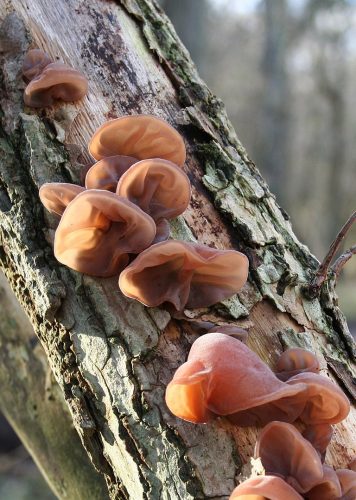Jelly ear, fungi on live and dead wood of deciduous trees and shrubs.
Also known as:
Judas’s ear
Jelly ear (Auricularia auricula-judae). Fungi on live and dead wood of deciduous trees and shrubs. Jelly ear occurs worldwide. In temperate regions, they are usually found in fall and winter. The fungi like shady places in moist environments.
Jelly ears start out saucer- or goblet-shaped; once mature, they are pleated and irregularly wavy. The fungi are softly hairy and are orange-brown. Judas ears can grow + 10 cm in size.
This fungus can cause white rot on live wood: it breaks down the lignin in the wood. Lignin together with cellulose forms wood. When lignin disappears, the tree loses firmness because only cellulose remains. The tree becomes susceptible to trunk breakage white rot.
Control
After infestation on live wood, recovery is not possible.
Prevention
Does not apply.

